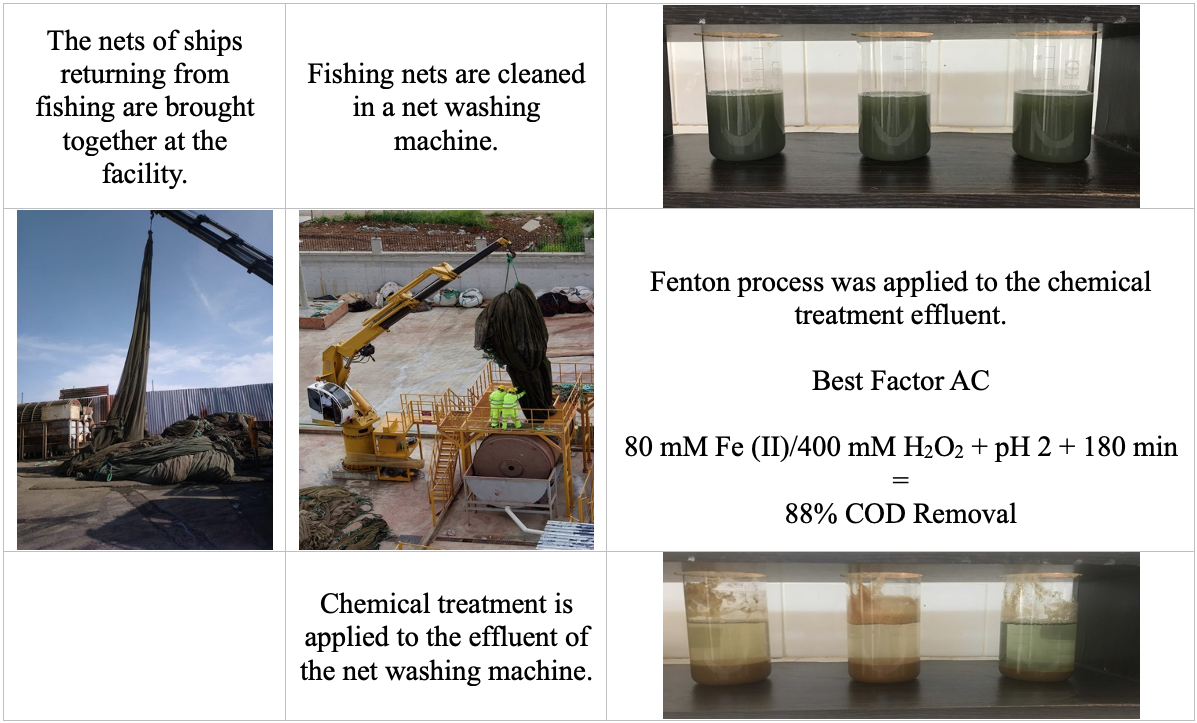
The discharge of wastewater from net washing is one of the most significant problems in the marine ecosystem because of its high organic and saline content. Sea water quality is deteriorated every day due to the high amount of organic matter produced in the aquaculture sector. The aim of this study was to investigate the treatability of net washing wastewater by Fenton process. The efficiency of advanced oxidation processes (AOPs) in the treatability of net washing wastewater was evaluated through chemical oxygen demand (COD) and color removal. The effects of H2O2, and Fe (II) dosages, pH and reaction time were investigated, and the parameters were optimized by 23 full factorial design principles and variance analysis (ANOVA). The results showed that H2O2 dosage was the most effective parameter for Fenton process. The maximum COD removal was found at Fe (II)/H2O2 concentration ratio of 1/5 and the 180 minutes reaction time. The COD removal increased from 77 % to 88 % by increasing the peroxide dose from 80 mM to 400 mM. The total R2 for the three factors was calculated to be 59.67%. According to the experimental results, in the factor analysis between the three variables and COD removal, only the variation in peroxide concentration was statistically significant. Since the efficiency of biological treatment is unstable in treating of high organic matter and saline wastewaters, the Fenton process has great potential in the treatment of net washing wastewater.
Total file downloads: 11